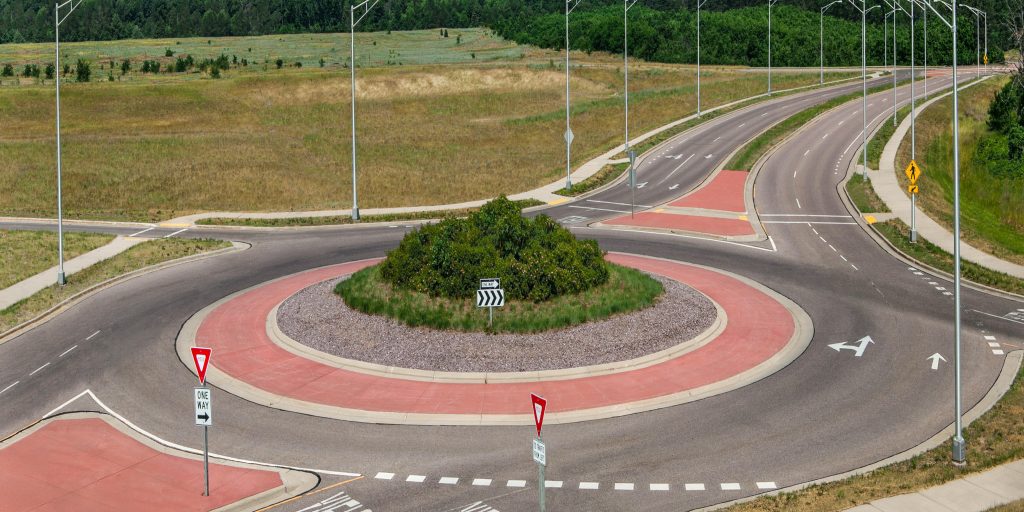Government can strike a calming balance between road safety and speed
We live in a time of extremes that impact nearly every aspect of our lives. Even driving has become a hotly debated topic.
Spurred by the rising death toll resulting from speeding and distracted driving, safe driving advocates are demanding implementation of so-called Vision Zero measures designed to force drivers to slow down and create safe spaces for vulnerable road users such as those on foot or bicycle. By installing speed cameras, lowering speed limits, creating bike lanes and traffic circles and imposing road diets, this group holds that any road death or injury is unacceptable.
While not opposed to such traffic calming tactics in theory, the other side, led primarily by frustrated commuters, truck drivers and others whose work depends on getting from Point A to Point B quickly and efficiently, complain that such measures are adding hours to their daily commute or delivery schedules.
Caught in the middle between these two extremes are local departments of public works and traffic engineering divisions. Charged with the safe and efficient movement of people and goods on roadways, these agencies are struggling to increase capacity and minimize delays—traditionally achieved by increasing travel speeds—while simultaneously tackling the very real public safety problems associated with speeding and reckless or distracted driving.
All of this added dynamic elements, such as sensors to measure traffic flow and automatic, interconnected guidance systems, into traffic management. It has also led to a gradual shift away from the 85th Percentile Rule, an approach to traffic management that seeks to accommodate motorists’ behavior rather than engineering streets for safety. Based on 1964’s “Solomon Curve,” which holds that speed limits should be set at what 85 percent of drivers think is healthy, the 85th Percentile Rule was the go-to resource for guidance on increasing capacity and minimizing delays.
That proposition changed, however, following publication of a 2017 report by the National Transportation Safety Board, which linked speed to the rapid rise in traffic fatalities. That report, which recommended striking a balance between the 85th Percentile Rule and a safe systems approach incorporating factors such as crash history and the presence of vulnerable road users, opened the door for numerous measures designed to lower speeds and make streets safer for all users. These included initiatives such as installation of speed cameras and roundabouts which can reduce severe crashes by as much as 78 percent, and road diets, which can lower crashes by nearly half by converting four-lane divided highways into three-lane roadways comprised of two thru lanes and a center two-way left turn lane.
While such Vision Zero tactics have been successful in slowing down drivers and creating safer spaces for vulnerable road users, they have often encountered resistance in the form of community opposition, lack of political will and unwillingness on the part of traffic engineers to implement due to the delays in traffic flow they might cause. Given that, is it possible for safety and speed to coexist? Is there some kind of balance that can be struck between getting drivers where they want to go quickly and keeping them (and others) safe?
It is likely impossible to create a safer road system while continuing to raise speed limits. Certain measures can be implemented, though, that can have a positive impact on driver and pedestrian safety without substantially lowering vehicle speeds. For example:
- Reversible lanes Some cities have implemented a roadway system in which one or more lanes may travel in either direction, depending on certain conditions. Meant to improve traffic flow during rush hours, reversible lanes are typically operated on regular fixed schedules that reflect daily commuting patterns. While reversible lanes may be a relatively lower-cost solution to major roadway widening projects, they do require electronic signs to notify drivers which lanes are open or closed, sensors to measure traffic volumes and speeds, monitoring cameras and software to manage the application.
- Dedicated turn lanes When new construction or major improvements are being undertaken, dedicated left- and right-turn lanes can be used to provide physical separation between turning traffic that is slowing or stopped, while simultaneously allowing thru traffic to continue without delay. Designed to promote safety while improving traffic flow, dedicated turn lanes are particularly effective in situations where traffic volumes and speeds are relatively high, and conflicts are likely to develop at intersections between thru and turning traffic.
- Rumble strips A low-cost measure to improve road safety, rumble strips are grooves or indents on roads that provide drivers with a tactile and audible warning. Capable of reducing wet road crashes by 52 percent and curve crashes by 24 percent, rumble strips are usually placed ahead of merging lanes or road shoulders, enabling thru traffic to maintain a reasonable rate of speed.
- Backplates Added to a traffic signal head to improve the visibility of the illuminated face of the signal, backplates can improve the visibility of a signal head and reduce crashes by 15 percent without substantially slowing traffic flow.
While there may always be some conflict between the need for speed and demands for safety, there are clearly compromises that state and local governments can pursue that will vastly improve safety while not substantially inhibiting traffic flow. The trick may be in recognizing that what works on one road system may not be the solution for all. Governments can strike an appropriate balance, but only by analyzing what design, engineering and enforcement would be most effective and in having the political will to make the changes that are necessary. In short, compromise—not extremes—should rule the day.
Wes Guckert, PTP is president and CEO of The Traffic Group, a leading service disabled veteran-owned small business (SDVOSB) traffic engineering and transportation planning firm serving clients nationally and internationally. He is also a fellow of ITE and on the National Small Business Leadership Council. For more information: www.trafficgroup.com or email: [email protected].




















